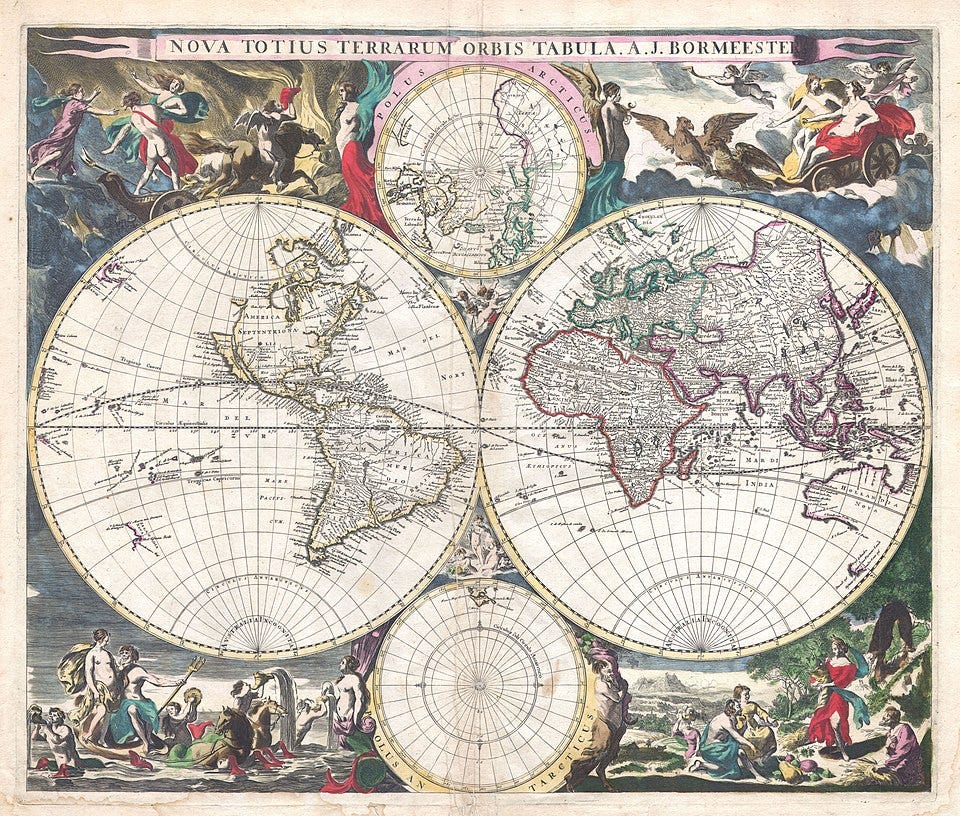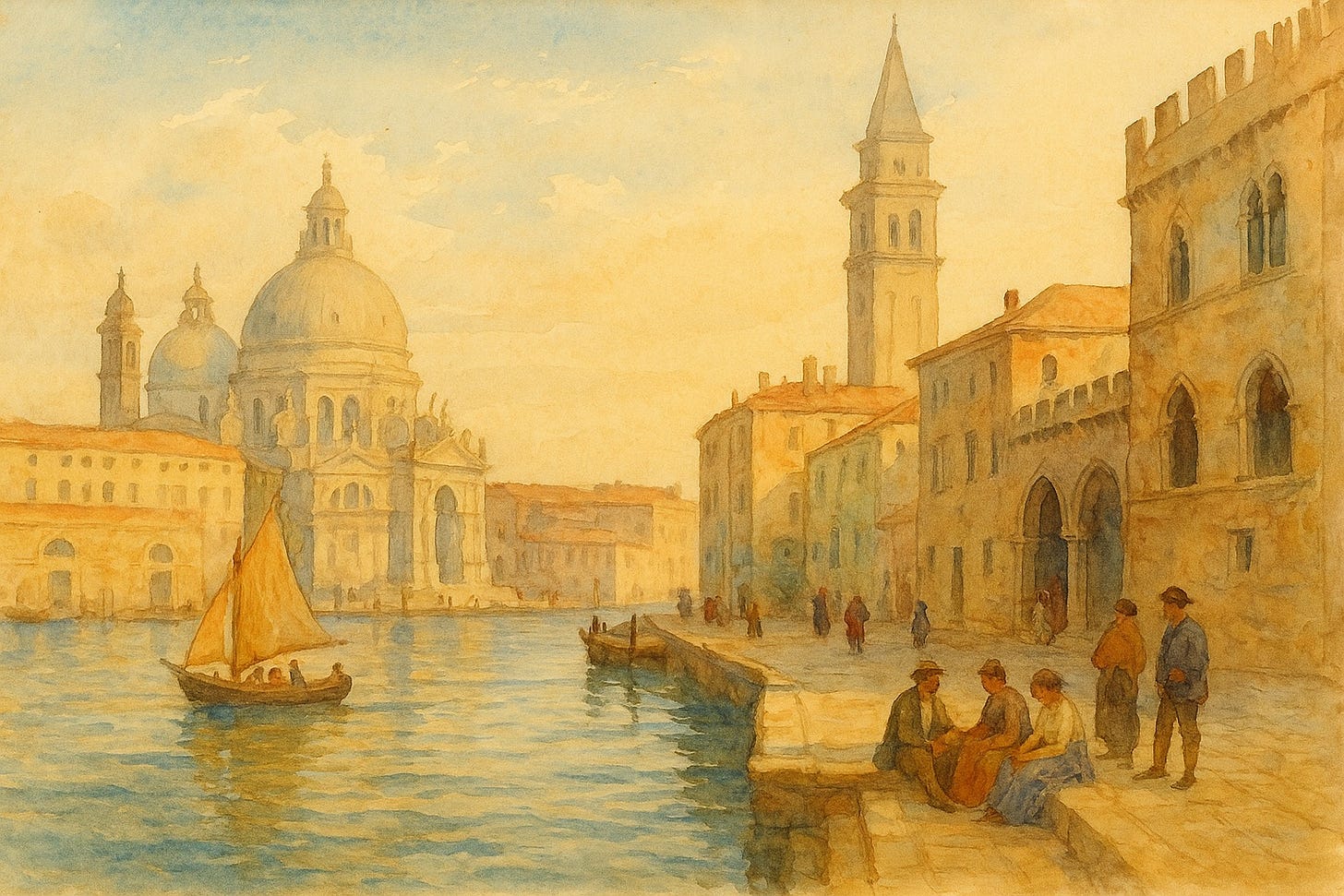Your Support Keeps Us Going
Local. Independent. Funded by you.
This is our version of a pledge drive.
For the next two weeks, all content is behind a paywall — including our usual free Wednesday, Thursday, Friday and Sunday stories.
We’re doing this to remind you: Napa Valley Features runs on reader support. No ads. No corporate owners. Just real local stories.
Subscriptions start at just $8 a month, or $60 a year — that’s less than 17 cents a day.
Want to go further? Our $500 Founding Member option gives you a choice: either a lifetime membership or the ability to share three yearly subscriptions with family and friends. You choose.
We’ll return to our regular mix of free and subscriber-only content on May 23.
If you’re already a paid subscriber — thank you. If not, now’s the time. Help keep independent journalism alive in Napa Valley.
Sailing Through History
By Georgeanne Brennan
When I finally acknowledged that my bucket list, top-heavy with Old World historical sites, wild coastlines, warm beaches, and food and wine meccas from the Hebrides to Mesopotamia, was unrealistic, I realized I had to look at options.

Reluctantly, I admitted I wasn’t going to get to visit all those places. But, I thought, if I were able to crowd a few of them together on a short cruise, I could satisfy some of my longing to see more parts of the Old World. So, in January I set out on an Adriatic cruise from Venice to Athens with Viking Cruises.
I imagined myself sailing through history, stopping along the way to walk the cobblestones of previous civilizations, reflect upon the architecture, art and literature generated over their centuries. And to explore foods and wines that have their origins deeply rooted in the past, yet resonate today in our own civilization.
In Napa, for example, in wine alone, we have Grgich Hills Estate, co-founded by a Croatian immigrant and winemaker, Miljenko “Mike” Grgich, whose chardonnay won the 1976 Judgment of Paris. Grgich Hills’ winemaker today, Ivo Jeramaz, is also a native of Croatia. Dave Del Dotto, founder of Del Dotto Estate Winery and Caves, traces his family winemaking traditions back to 1150 in the region of Venice and celebrates it with a glamorous Venetian-style tasting room with a Murano glass chandelier. To Kolon, the famous Napa Valley vineyard, means “highest beauty” in Greek, another nod to the Old World.
The sun had come out, and it was easy to imagine a long stay in this part of the world.
I had been to Venice many years before on a junior year whirlwind tour of Europe, and my primary memory of the city was of being attacked by pigeons on a hot day in the crowded Piazza San Marco. This time, it was an ice-cold day in winter, with grey skies, high water and only a scattering of visitors. I stood in the near-empty piazza, gondolas pulled onto its edges as the water of the lagoon lapped around them, edging deeper into the piazza itself. The few pigeons ignored me, intent on finding food. The Doge’s Palace, the heart of the Venetian Republic and its empire, which lasted from 697 until 1797, stretched along one side of the piazza, across from the high, rounded dome of St. Mark’s Basilica, built nearly a thousand years ago.
It was impossible for me to imagine – and I tried – that the entire city of Venice is built on wooden pilings, some dating back to the city’s founding. This means that the whole city is the old city, unlike most European cities that have an old city center surrounded by newer construction. There is nowhere like it.

Venice is laced with canals, but it’s crisscrossed with streets too, some so narrow they are mere passageways, allowing for only one person at a time, two at the most. Then suddenly, they open onto a square or a wider thoroughfare. Bars and cafes line the squares and streets, and I availed myself of their warm shelter. I sampled crisp, white Veneto wines with cecchi, the little snacks that are Venice’s answer to tapas. I had creamy salt cod spread on polenta, sardines on small squares of bread, even a tuna salad on a square of soft white bread. Coffee was strong and to my liking, and even more to my liking were the pastries. One was particularly memorable, like a sugar doughnut without a hole, flecked with bits of raisins and candied fruit, which I had at the venerable Rosa Salva bakery and gelateria, founded in 1879.
Venice is so thick with history, it sometimes took me a moment to realize which century I was experiencing, but I knew I was headed for the 19th century when I accepted an invitation to afternoon tea at the St. Regis Hotel. The hotel is actually a collection of five historic palaces on the Grand Canal that were joined together in the 19th century to create the Hotel Britannia. This became one of Venice’s best hotels, welcoming the famous and the well-traveled, including Claude Monet and J.M.W. Turner. Later it became the Westin Europa, and in 2019, after a full renovation, the St. Regis.
If you arrive by water taxi or private boat via the Grand Canal, you’ll be struck by the hotel’s grandeur and spiffy, red-coated attendants. Not so if you enter from the street side, just over a small stone bridge and under a narrow passageway, like I did. The brass name plate of the hotel is so discreet I overlooked it twice. Once inside, however, I knew I had arrived. My friend and I were escorted through the vast marble lobby toward the salon. Small tables and sofas were set around the room, which was dominated by a huge bespoke Murano glass chandelier.
I’m not a tea-lover, preferring coffee, but I do like the tiny sandwiches, scones, thick cream and pastries that accompany a grand afternoon tea, and I wasn’t disappointed. From the many teas on offer, I chose jasmine. It arrived in a silver pot along with a pre-set hourglass timer, so I would know exactly when the length of steeping was correct.
We lingered long enough that we were there to witness the daily ritual of sabering Champagne that takes place in the salon at 5:30 p.m. However, I did not volunteer to take the sword, watching instead while a young woman wielded it with the guidance of a charming liveried young man. Everyone in attendance was offered a glass of Champagne, which was the perfect way to conclude afternoon tea at the St. Regis.
Venice is said to have 139 churches, and many of them are decorated with murals and paintings by Venetian greats such as Titian and Tintoretto. I couldn’t visit everything, so I opted for the grandest of all, the 10th- to 13th-century St. Mark’s Basilica. Nothing could have prepared me for its splendor. Every inch of the basilica’s towering halls and soaring interior arches seemed to shimmer in gold and glittering mosaics.
How could this have been built on top of a lagoon, supported by wooden poles driven into the mud by 10th century workers? But that’s Venice. Just accept the magic; don’t try to understand it.




